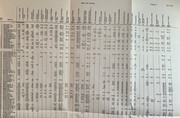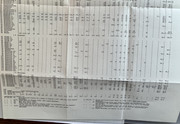Thus, we envisage that a maritime network connected Thy with north-west Europe down to the modern Netherlands, as we can observe similarities in both settlement types and metalwork (Bech and Rasmussen). Likewise, there were connections to south-western Norway, as well as
Bohuslän in western Sweden and the Oslofjord region in Norway starting in the Late Neolithic. Thy held a pivotal position in connecting these two trading systems, which was supported by population movements and colonization. There is much to suggest that populations from Thy and northern Jutland settled in these regions, leading to the opening of landscapes similar to Thy
[..]
However, the lack of access to good building timber during the Early Bronze Age in Thy would have been an obstacle to the construction of seagoing ships. Here it seems that the economic and political power of Thy enabled control of the trade networks in the Kattegat-Skagerrak region, networks that also connected the timber-rich Oslofjord-Bohuslän region and southwestern Norway with Thy. This system connected to a similar maritime network that brought copper and tin north in exchange for amber collected along the Thy North Sea coast
Jæren in SW Norway stands out for being a particularly rich region during this period, perhaps due to contacts like these over the Skagerrak? The other main cultural hubs were to be found in the wider Oslofjord-region, with the Eastern side (Østfold) probably belonging to the same cultural area as Bohuslän. The number of rock art-sites in Østfold now exceeds a thousand and new ones are being found quite regularly these days by hobbyists:
https://viken.no/aktuelt/her-er-hell...000.92608.aspx









